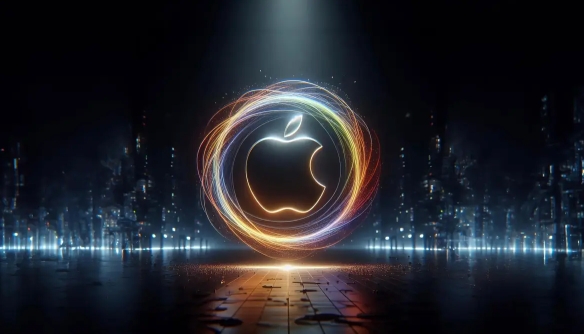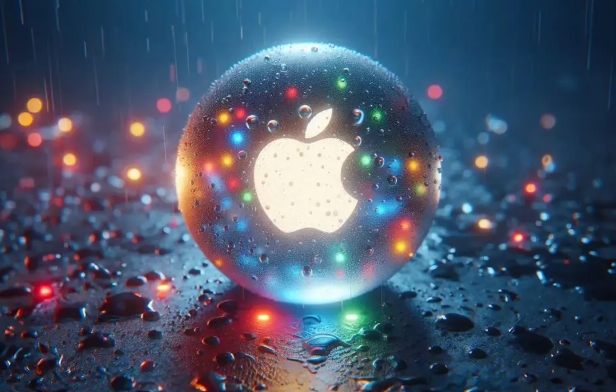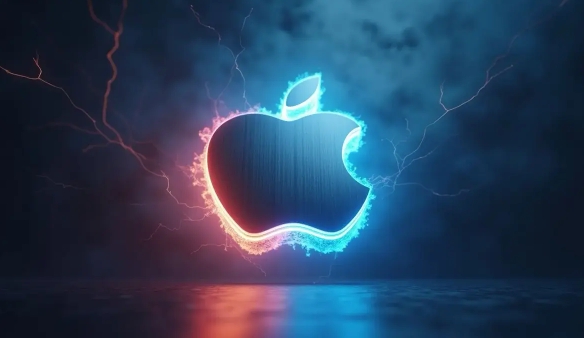How to get the macOS full installer from the App Store?
Jul 28, 2025 am 04:20 AMTo download the full macOS installer from the App Store, first ensure your Mac is compatible with the desired macOS version by checking System Settings > General > Software Update or Apple’s online compatibility list. Next, open the Mac App Store, search for the macOS version, click Get then Install, and immediately close the installer window to let the .app file download in the background. If that fails, use Terminal with mas-cli to trigger the download by installing Homebrew, running brew install mas, signing into the App Store via mas signin, searching for the macOS installer ID, and installing it using mas install [ID]. Alternatively, if you only need a bootable USB drive, use the built-in createinstallmedia command in Terminal with an existing macOS installer app to create one directly without downloading the full installer separately.

If you're looking to download the full macOS installer from the App Store, it's not always straightforward. Apple doesn’t always show a direct "Download" button for older versions of macOS, and sometimes even the latest version might behave unexpectedly. Here’s how to actually get the full installer without headaches.

Check if You’re Eligible for the Download
Before jumping into the App Store, make sure your Mac is compatible with the macOS version you want. Apple restricts downloads based on hardware models, so even if you click “Get” or “Download,” it might not proceed if your Mac isn’t supported.

- Go to System Settings > General > Software Update to see what macOS updates are available.
- If you see an option to upgrade, that means your Mac is eligible.
- If not, double-check Apple’s compatibility list online for that specific macOS version.
Also, keep in mind that Apple only lets you download macOS installers directly through the App Store if you've previously downloaded them on that Apple ID or if they're still actively distributed.
Trigger the Installer Download Manually
Sometimes, clicking “Get” in the App Store just starts an automatic installation instead of downloading the installer. To prevent that and get the full .app file:

- Open the Mac App Store.
- Search for the macOS version you want (e.g., macOS Ventura, Monterey, Sonoma).
- Click Get then Install — don’t worry, it won’t start installing right away.
- Immediately after clicking Install, close the installer window.
- Open Applications and look for the installer app (like “Install macOS Ventura”). If it’s there, the full installer is downloading in the background.
If nothing shows up after a few minutes, try restarting the App Store or even your Mac and repeat the process.
Use Terminal to Generate a Direct Download Link (Advanced)
For those comfortable with Terminal, there’s a trick using a tool called mas-cli that can help trigger App Store downloads from the command line.
Here’s how:
- Install Homebrew if you haven't already.
- Run
brew install mas. - Sign into the Mac App Store via Terminal:
mas signin your@apple.com. - Search for the macOS installer ID using
mas search "macOS Ventura"(replace with desired version). - Once you have the correct ID, run
mas install [ID].
This method may work when the App Store UI hides the download button. However, this depends on Apple’s current distribution policies and may not always work for all macOS versions.
Alternative: Create a Bootable Installer Without the Full File
If you’re trying to create a bootable USB drive but don’t need the standalone installer file, macOS has built-in tools to help.
- Use the
createinstallmediacommand found inside the macOS installer app. - Plug in a USB drive (16GB recommended).
- Open Terminal and type
/path/to/Install\ macOS\ [version].app/Contents/Resources/createinstallmedia --volume /Volumes/MyVolumeName. - Replace the path and volume name with your actual installer location and USB drive name.
This skips the need to manually download the installer app entirely, assuming you’ve already got it on your system or can access it another way.
Getting the macOS installer from the App Store can be tricky depending on your Mac model and Apple ID history, but with these methods, you should be able to find one that works. It’s not complicated, but it does require a bit of patience and knowing the right steps.
The above is the detailed content of How to get the macOS full installer from the App Store?. For more information, please follow other related articles on the PHP Chinese website!

Hot AI Tools

Undress AI Tool
Undress images for free

Undresser.AI Undress
AI-powered app for creating realistic nude photos

AI Clothes Remover
Online AI tool for removing clothes from photos.

Clothoff.io
AI clothes remover

Video Face Swap
Swap faces in any video effortlessly with our completely free AI face swap tool!

Hot Article

Hot Tools

Notepad++7.3.1
Easy-to-use and free code editor

SublimeText3 Chinese version
Chinese version, very easy to use

Zend Studio 13.0.1
Powerful PHP integrated development environment

Dreamweaver CS6
Visual web development tools

SublimeText3 Mac version
God-level code editing software (SublimeText3)

Hot Topics
 Detailed explanation of the installation steps of MySQL on macOS system
Apr 29, 2025 pm 03:36 PM
Detailed explanation of the installation steps of MySQL on macOS system
Apr 29, 2025 pm 03:36 PM
Installing MySQL on macOS can be achieved through the following steps: 1. Install Homebrew, using the command /bin/bash-c"$(curl-fsSLhttps://raw.githubusercontent.com/Homebrew/install/HEAD/install.sh)". 2. Update Homebrew and use brewupdate. 3. Install MySQL and use brewinstallmysql. 4. Start MySQL service and use brewservicesstartmysql. After installation, you can use mysql-u
 How to install AdobeReader on macOS
May 16, 2025 pm 08:33 PM
How to install AdobeReader on macOS
May 16, 2025 pm 08:33 PM
AdobeReader no longer supports macOS, and AdobeAcrobatReaderDC is required. 1) Visit Adobe's official website and download a version suitable for macOS. 2) Open the .dmg file, drag the icon to the "Applications" folder, enter the administrator password and complete the installation. 3) Start Adobe AcrobatReaderDC from the "Applications" folder.
 Fixing the 'Untrusted_Cert_Title' error during macOS installation
Jul 07, 2025 am 01:06 AM
Fixing the 'Untrusted_Cert_Title' error during macOS installation
Jul 07, 2025 am 01:06 AM
To resolve the "Untrusted_Cert_Title" error, you must first make sure to use the official certified installer and create it correctly. Secondly, check whether the system time settings are accurate, then update the firmware and bootstrap, and finally try to install macOS through the network recovery. The specific steps are: 1. Use the official AppStore installer and create a USB installer through Apple tools such as createinstallmedia to avoid manually copying files or using third-party tools; 2. After entering recovery mode, correct the date and time through terminal commands; 3. Check and update the EFI or firmware of the Mac to confirm that the hardware supports the target macOS version; 4. Long press Option Command R to start the network
 macOS could not be installed because the path /System/Installation/Packages/OSInstall.mpkg appears to be missing or damaged
Jul 06, 2025 am 01:04 AM
macOS could not be installed because the path /System/Installation/Packages/OSInstall.mpkg appears to be missing or damaged
Jul 06, 2025 am 01:04 AM
When encountering the prompt "macOS could not be installed because of the path/System/Installation/Packages/OSInstall.mpkgappearstobemissingordamaged", it means that the system installation package is missing or damaged during installation or upgrading macOS, which is common in old version recovery images, third-party boot disks or disk structure abnormalities; solutions include: 1. Confirm whether the boot media is complete, it is recommended to use the official createinstallmedia command to create a boot disk and check whether OSInstall.mpkg exists; 2. Select " from recovery mode"
 How to install macOS on a blank hard drive?
Jul 07, 2025 am 12:32 AM
How to install macOS on a blank hard drive?
Jul 07, 2025 am 12:32 AM
Installing macOS from scratch is not complicated, just prepare the tools and follow the steps. First, prepare a working Mac, at least 16GB USB drive, a stable network connection and sufficient time; secondly, it is recommended to use the createinstallmedia command in Terminal to create a bootable installer; then enter the installation interface through RecoveryMode or USB installer; then use DiskUtility to format the target hard disk as APFS or MacOSExtended; finally follow the prompts to complete the installation process.
 How to install macOS without an Apple ID?
Jul 14, 2025 am 01:19 AM
How to install macOS without an Apple ID?
Jul 14, 2025 am 01:19 AM
You can install macOS without using AppleID, but some functions are limited. There is no need to force login to AppleID during the installation process. You can create a local account to use the basic functions of the system. However, functions such as iCloud synchronization, AppStore download, and search for my Mac require AppleID to enable it. 1. When installing, you can use the USB drive to boot disk or recovery mode to create a local account; 2. Local account can browse web pages, edit documents, program development, and play media, but it is impossible to use iCloud and download most AppStore applications; 3. Skip AppleID to log in for the first time to create a local account; 4. Suitable for computer room equipment, development and testing, and privacy-sensitive users, and it is recommended to bind Apple to long-term use.
 How long does a macOS installation take?
Jul 03, 2025 am 01:06 AM
How long does a macOS installation take?
Jul 03, 2025 am 01:06 AM
AcleanmacOSinstallationtypicallytakes30minutestoanhour,butseveralfactorscanextendtheprocess.1)InternetRecoverymayadd15minutestooveranhourforOSdownload,dependingoninternetspeed.2)Installationtimevariesbetween20–40minutesafterdownloadcompletion.3)Stora
 OpenCore Legacy Patcher for macOS installation guide
Jul 19, 2025 am 01:26 AM
OpenCore Legacy Patcher for macOS installation guide
Jul 19, 2025 am 01:26 AM
If the device is not in Apple's official support list, you can install macOS on old Macs through OpenCoreLegacyPatcher (OCLP). The specific steps are as follows: 1. Confirm the device compatibility, such as MacBookPro, iMac or Macmini around 2012, and check whether the motherboard chipset supports EFI mode; 2. Prepare a 16GB or larger USB drive and make a macOS installation USB drive, write to the image using official commands or third-party tools; 3. Download and run OCLP, select the target device for patch processing, automatically solve the kernel expansion and driver compatibility issues, and manually adjust the patch options if necessary; 4. Insert the patched USB drive, press the Option key when restarting






